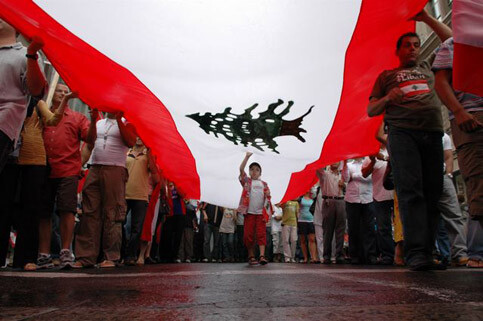The Electronic Intifada 14 March 2007

Protest in Montreal against Israel’s 2006 attack. (Photo: Darren Ell)
The Lebanon-Support portal was launched during the Israeli attack on Lebanon, and its services were launched fully by the time of the cease-fire and the beginning of the recovery phase.
The portal was conceptualized after several discussions between the partners on the best manner to support coordination efforts where all actors can interact and share information. This was in addition to attempting to solve a problem faced by the coordination mechanisms already in existence, such as OCHA/HIC and the HRC. The latter platforms were able to provide information on a macro level (large UN operations, government operations) but lacked the ability to link with localized projects.
The portal had been designed to take into consideration the fluid situation regarding relief coordination in Lebanon. The Coordination Platform had taken into consideration the fact that Lebanese civil society is very active and that, from previous experience, recovery and development will be undertaken by a variety of actors of different sizes, shapes, and access to resources. The design of the portal reflected this fact and created a space where different kinds of actors can interact and share information.
Difficulties related to collection of data were solved with the creation of a “call center” that contacts all known actors on a regular basis and updates information accordingly. This avoids the problems of connectivity of local NGO’s and CBO’s, as well as not burdening organizations too much with paperwork. The platform also collects other types of data and news to make available to actors on the ground.
Lebanon-Support thus complements the work being done by more centralized agencies, such as HRC (or currently the Recovery Unit of Office of the Prime Minister) or UN mechanisms, by providing direct contact, through the call center and the partner organizations with CBO’s and local bodies. Another added value for the project was the ability to create links between the various actors, especially between INGO’s and local organizations. Due to its flexibility, the tool is used for various kinds of coordination according to the needs of the concerned actors.
This flexibility allows the portal to readapt its functions into the new situation in South Lebanon, the Suburbs, and the country in general.
Overview of the current coordination needs:
The main issue concerning coordination following 3 months of cease fire is the diversity of the types of projects and programs conducted on the ground and the diversity of the concerned actors. This situation is due to the fact that efforts do not necessarily fall into one category, as aid is taking various forms:
1. Direct relief operations are still under way in many villages
2. Reconstruction efforts are at different stages with different actors, even major actors
3. Demining operations are expected to last for at least another year and a half, due to the spread of UXOs especially cluster bombs
4. The relative underdevelopment of public services in the affected areas adds to the difficulties
5. In many cases, local and international organizations have begun “development” work, while in some regions the main activities are those of direct relief
6. The high number of expected actors in the recovery and development phase will create additional complexities to the coordination mechanisms
This situation will need a flexible coordination platform and the portal attempts to solve the issue by providing diverse services and allowing access for all actors, as well as creating an open space for exchange of information. Thus, the services of the portal are provided as a collections of different “tools” that could be used and adapted according to need.
For full details on the multiple projects, organizations & group connected through the Lebanon Support portal project visit them online: Lebanon Support.